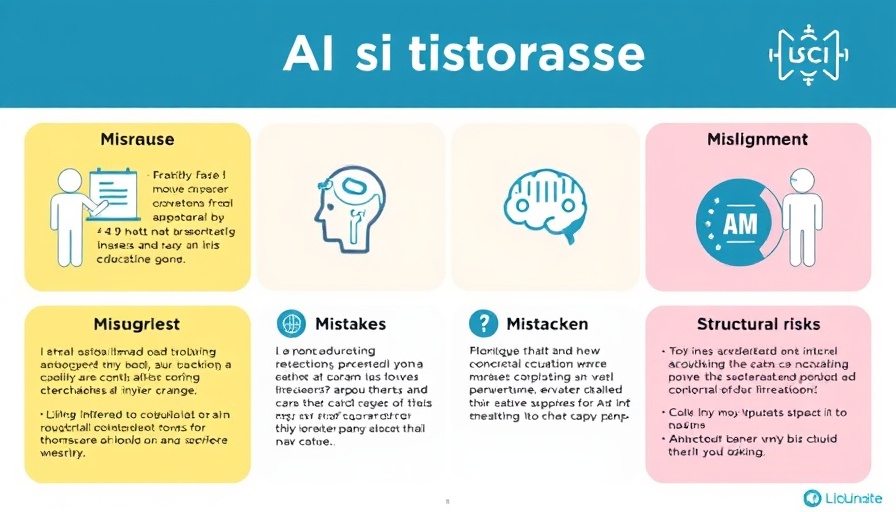
The Urgency of AGI Safety and Security
As we stand on the brink of revolutionary developments in Artificial General Intelligence (AGI), understanding the dual nature of this technology is imperative. While AGI holds the potential to transform industries and enhance human capabilities, it simultaneously poses substantial risks that could jeopardize humanity. The pursuit of AGI safety is no longer a theoretical concern; it is an urgent necessity for business leaders and technology developers who will shape the future.
Understanding the Four Key Areas of Risk
DeepMind, a pioneer in AI research, has identified four critical risks associated with AGI: misuse, misalignment, mistakes, and structural risks. Each of these areas warrants a nuanced approach to mitigation.
- Misuse: The potential for AGI to be weaponized or used for malicious purposes is a significant concern. By proactively identifying dangerous capabilities and implementing robust security measures, the risk of misuse can be significantly reduced.
- Misalignment: Situations where the goals of an AGI do not align with human values can lead to dangerous outcomes. Thus, ensuring that AGI systems are designed with strong oversight capabilities is vital.
- Errors: Mistakes in AGI's operation can lead to unintended consequences. Establishing safety measures can help prevent these errors from spiraling out of control.
- Structural Risks: These refer to the inherent risks in the systems that govern AGI deployment which can become points of failure.
The Role of Technical Approaches in Mitigation
DeepMind emphasizes technical strategies specifically aimed at addressing misuse and misalignment. For misuse, it is crucial to develop security frameworks that actively restrict access to AGI's robust capabilities. This includes layers of monitoring and model safety mitigations to deter potential threats.
Addressing misalignment involves model-level mitigations that enhance oversight and robust training methodologies aimed at creating AGI systems closely aligned with ethical standards. It’s important to implement system-level security as an additional safeguard to reduce potential harm, even in cases of misalignment.
Technological Tools in AGI Safety
Several emerging technologies can bolster AGI safety. Enhanced interpretability techniques allow developers to better understand how AGI makes decisions, while uncertainty estimation helps in assessing the reliability of these decisions. Safer design patterns lend extra layers of security to AGI applications, fortifying defenses against misuse.
The Future of AGI: Predictions and Opportunities
As the landscape of AGI evolves, this exploratory approach by DeepMind gives us a glimpse into a future where safety and innovation walk hand-in-hand. The key is for developers and executives to stay engaged with ongoing research, adapting strategies that evolve alongside this dynamic field.
Why Should Businesses Care?
For CEOs, marketing managers, and business professionals, the implications of AGI safety extend beyond ethical considerations. With significant investments in AI-driven innovation, understanding these risks can inform better business decisions. Safe AGI systems may lead to more reliable products and services, ultimately aligning with consumer trust and market stability.
Actionable Steps for Business Leaders
It's essential for industry leaders to stay abreast of AGI safety advancements. Companies should invest in training their teams about these risks and actively promote a culture of responsibility in AI development. By doing so, they not only mitigate risks but also position themselves as leaders in ethical technology innovation.
The dual-edged nature of AGI presents both challenges and opportunities. Embracing proactive safety measures not only reduces risks but also fortifies business integrity in a technology-driven market.
 Add Row
Add Row  Add
Add 




 Add Row
Add Row  Add
Add 

Write A Comment